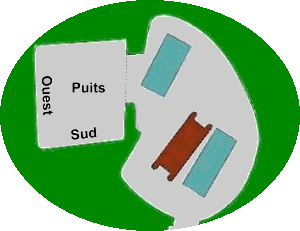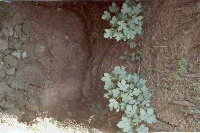Ahiram King of Byblos
The oldest and most famous Phoenician sarcophagus is that of King Ahiram of Goubal (Jbeil-Byblos). It was discovered during excavations by French archaeologists following a landslide caused by heavy rains. Found in the tomb V, this sarcophagus is currently conserved in the National Museum of Beirut. It represents one of the most important pieces, if not the centerpiece of the museum's collection. It dates from the thirteenth century BC, and was used for the burial of an Egyptian and reused by Ithobaal for the interment of his father Ahiram in the tenth century BC.
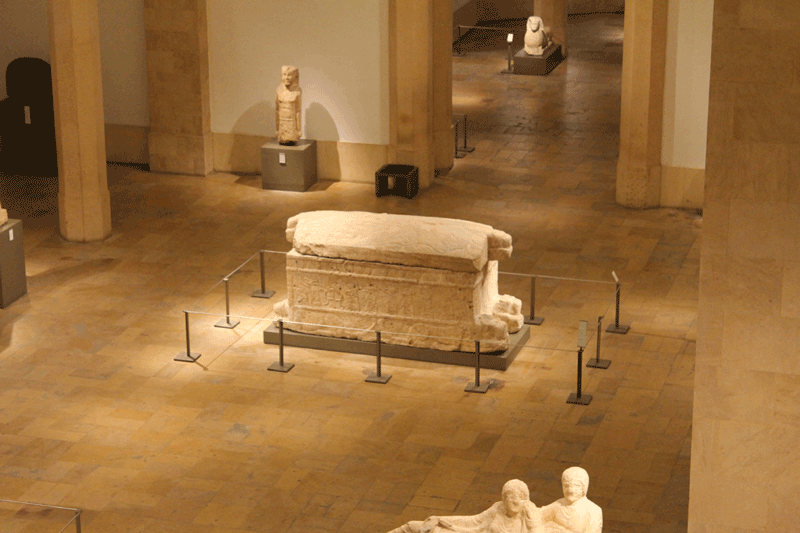
National Museum
This sarcophagus is particularly famous because of the inscription in the Phoenician alphabetic characters, which begins at the upper edge of the short side of the casket, and ends on the lid. Written from right to left, this inscription represents the oldest text that has survived in Linear Phoenician script. Out of the twenty two Phoenician alphabet letters, nineteen caracters were used. The inscription indicates that the sarcophagus was fabricated by Ithobaal, son of Ahiram, king of Goubal, specialy for his father, as his eternal home.
If a king, a governor or any army commander appears ahead of Goubal (Byblos) and opens the sarcophagus, his scepter would break, and his kingdom throne would by overturned, and that peace and quiet would escape from Goubal, and as for him: that his memory will disappear forever.
According to the archaeologist Hélène Sader(1), it is generally acknowledged that the sarcophagus dates from the thirteenth century BC, and is older than its inscription engraved in Phoenician alphabet (19 letters). Examinations carried out on this monument have revealed the presence of an older pseudo-hieroglyphic inscription. Some objects bearing the cartouche of Ramses II (XIII century), were also found in the burial chamber next to the sarcophagus. The Phoenician inscription attests the reuse of this sarcophagus for the king Ahiram's remains. This engraving is usually dated from the tenth century.
Experts are split on this discrepancy. Some adopt the same date for the sarcophagus and the Phoenician inscription, as that of the thirteenth century, while others adopt that the text, in relation to the form of his writing, dated to the tenth century; the period of Ahiram governance in Byblos, and that the sarcophagus was probably reused. Scientific studies have still not been able to set an exact date on the whole issue. The question is always asked: From which epoch was engraved the oldest writing found in Phoenician letters?
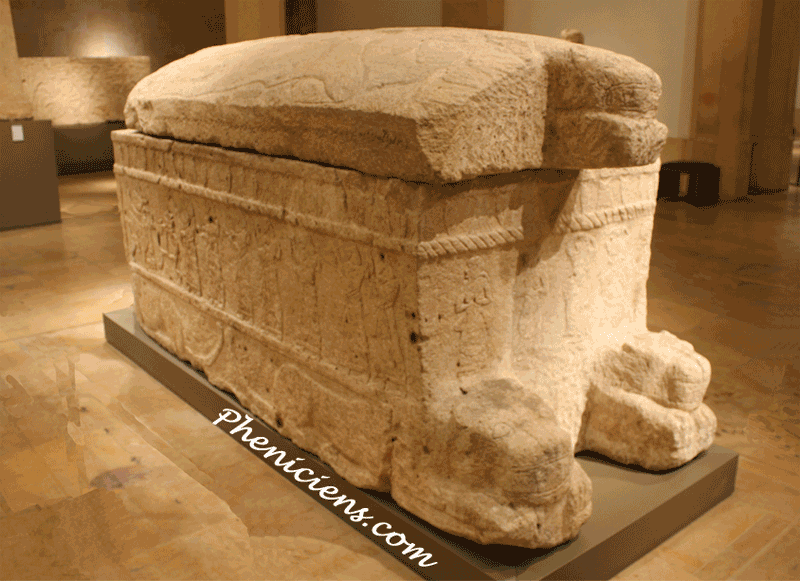
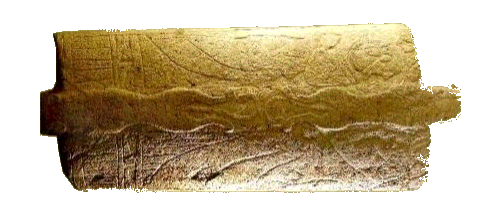
This sarcophagus, in parallelepiped shape, is etched into a limestone rock, and is based on four crouching lions. The figures, on both sides, represent processions: on the first side we see the sovereign (or perhaps a god) on a throne, bordered by winged sphinxes, facing him is a table laid out towards, where devotees 'and bearers' offerings are progressing. While the second side shows devotees in funeral procession. Along the shorter sides, there are engravings representing women beating their breasts and tearing their hair in sign of mourning. Over the cover, there are two personages each holding a lotus flower, lying face to face and separated by two lions, like those on the base of the sarcophagus. We can suppose that these two persons represent the king Ahiram wearing the faded flower of lotus, symbolizing death, and his son Ittobaal, bringing the blossoming lotus, representing life. The heads of lions, which extend from each side of the cover, were used for the opening and closing maneuvers. Traces of red paint still exists on the cover which indicates that the sarcophagus was painted.
During the conflict that ravaged the country of the Cedars since 1975, failing to move the sarcophagus owing to its big dimensions, museum officials, under the direction of Emir Maurice Chehab, decided to leave it there, and protect it by wrapping it in reinforced concrete in order to preserve it against pillage and fighting-related damage. In 1991, restoration works for the reopening of the museum were started. The sarcophagus was excavated, rehabilitated and re-exposed.
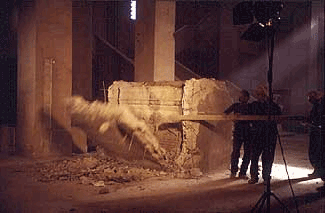
Uncovering of Ahiram's sarcophagus
The sarcophagus was loaned to the Arab World Institute in Paris for the exhibition, "Liban, l’autre rive" (Lebanon, the other bank), which was held in the premises of the IMA, on 27 October 1998 uptil May 2, 1999. Since then, the sarcophagus has taken its place in the National Museum of Beirut, where it represents the centerpiece of the collection.
| (1) |
Hélène SADER, article tiré du livre Liban, l'autre rive, IMA, Flammarion, 1998, p.126. |
Retour texte |

